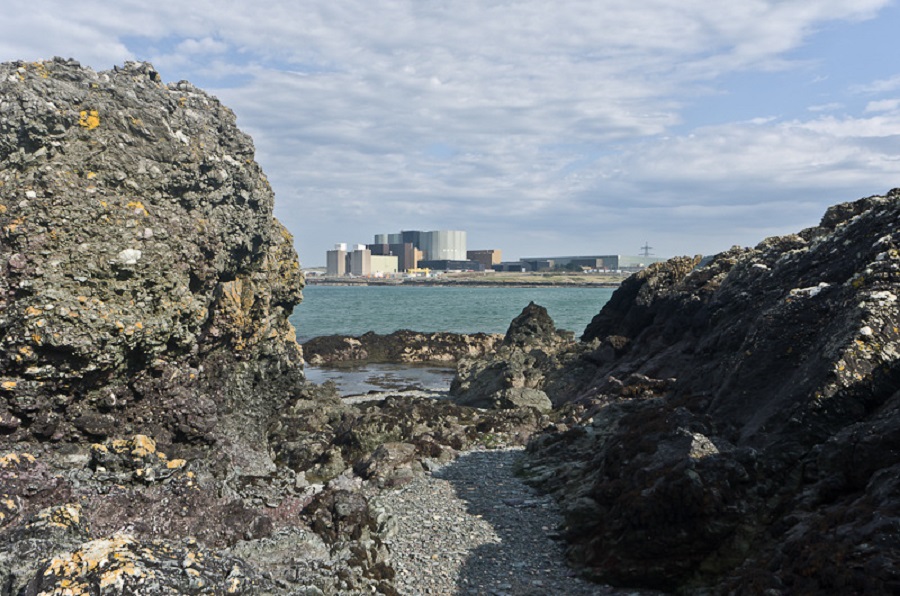Concerns raised by decline in number of people employed in the nuclear industry in Wales

Concerns have been raised about the decline of the nuclear industry in Wales following the publication of new employment data.
The Nuclear Industry Association’s (NIA) has released its’ 2024 Jobs Map, which reveals a significant decline in the number of people employed in the industry in Wales.
Anglesey has seen a 57% drop in jobs linked to the nuclear industry – the worst of any UK constituency – despite Wylfa being recognised as the best site for a new nuclear development in Europe, according to the NIA.
There are currently 827 people working in the nuclear industry in Wales, down from 1,346 in 2014.
Ynys Môn has seen the biggest fall, with only 321 jobs now compared to 750 in 2010.
In comparison jobs in the nuclear industry in England have risen by 65%.
New project
Anglesey Council Deputy Leader, Councillor Gary Pritchard, said, “The significant drop in nuclear jobs on the Island has been compounded by several failed attempts to deliver a new project on the Wylfa site.
“At its peak, the former Magnox nuclear power station at Wylfa, which began decommissioning in 2015, employed around 1,000 people, with the local population, particularly in North Anglesey, highly dependent on the station.
“The closure of other employers at Rehau and Octel in Amlwch has also contributed to North Anglesey’s economic decline over the last 20 years. The subsequent lack of jobs has resulted in working aged people, many of whom are Welsh speakers, moving out with their families – leaving an ageing population and a struggling economy.”
“The NIA’s 2024 Jobs Map reaffirms the Council’s position that a new nuclear development at Wylfa, either at GW or SMR scale, is vital to ensure the long-term wellbeing and prosperity of our Island’s communities, particularly those in North Anglesey. A firm commitment and timescales for a development happening at Wylfa from UK Government is crucial to secure local job opportunities.”
The Council’s latest North Anglesey Socio-economic Impact Report has confirmed that the North of the Island has been in protracted decline for at least two decades.
Chief Executive, Dylan J Williams said, “The County Council and the public sector cannot regenerate North Anglesey on their own. Attracting new investment from the private sector will be critical, and a new nuclear development at Wylfa offers the potential to secure long term transformational change.”
“We now need certainty from the UK government that a development will take place on the Wylfa site. This will enable us to plan effectively, influence and give assurances to our communities. It’s essential that any potential development recognises and protects the qualities that make the Island and its communities unique, this includes the Welsh Language and our culture.”
Preferred site
In May, the Conservative Government confirmed Wylfa as the preferred site for a major new nuclear power development.
This followed an announcement by then Chancellor Jeremy Hunt in his March Budget of a £160 million deal with Hitachi to purchase the Wylfa site and the Oldbury site in South Gloucestershire as two possible sites for new nuclear projects.
Hitachi pulled the plug on a project to build a nuclear power station on Ynys Môn three years ago, despite pumping £2 billion into the development.
Wylfa’s twin reactor Magnox nuclear power station stopped generating power at the end of 2015 and has been decommissioned.
In August the new Labour Government announced that £5.5 billion had been “unlocked” as part of a new nuclear power station subsidy scheme.
The money is for “development expenditure” including enabling works at Sizewell C in Suffolk, before a “final investment decision”, when the project’s backers decide whether or not to press ahead with it.
Small Modular Reactor
Last year, the company behind plans to develop the former nuclear power station in Trawsfynydd, Gwynedd, completed its first phase of development work confirming plans for a Small Modular Reactor at the site
Development work undertaken by Cwmni Egino established that land owned by the Nuclear Decommissioning Authority (NDA) could be suitable for a range of SMR technologies with the potential to generate up to 1GW of electricity.
The existing nuclear station at Trawsfynydd, which at its peak employed over 700 people, closed in 1993 and decommissioning has been ongoing since 1995.
Cwmni Egino was set up by Welsh Government to promote economic and social regeneration for any future development at Trawsfynydd.
It is estimated that SMRs at Trawsfynydd could create over 400 jobs in the local area and over £600m for north west Wales and £1.3bn for the whole of Wales during over an operational life of 60 years.
It would also create jobs during the construction stage, as well as through the Welsh and UK supply chains.
Cwmni Egino is aiming to be the first SMR project approved by the UK Government with construction starting before the end of the decade.
Support our Nation today
For the price of a cup of coffee a month you can help us create an independent, not-for-profit, national news service for the people of Wales, by the people of Wales.





That people are losing their jobs is always sad news but trying to replace them with a nuclear energy site seems to be very backward looking. There is huge potential around Ynys Mon and the rest of the North Coast for both wave and wind power. Why not invest in a factory to build wave power kit which would also be likely to employ the same numbers and have a long service life. Nuclear has a well established history of being late in commissioning, costing way over budget and leaving a huge decommissioning problem at the end of its life.… Read more »
I have zero concern about less nuclear in Cymru, I want zero. Now the concern is employment investment in the areas losing jobs. But that is something across our country as the loss of the mines was never invested well.